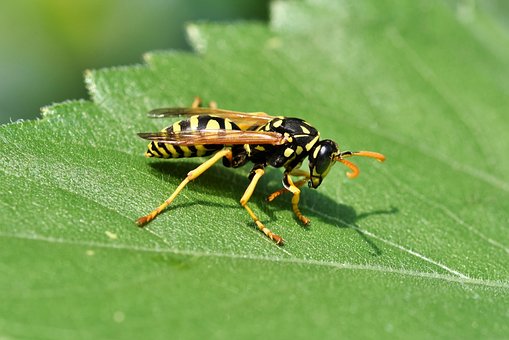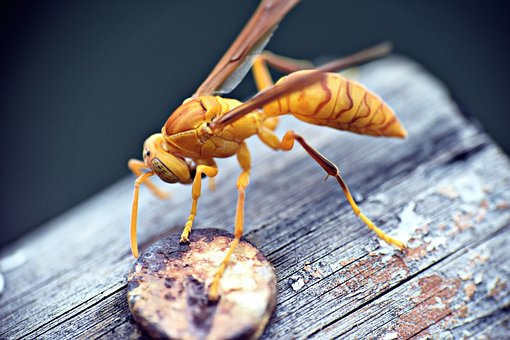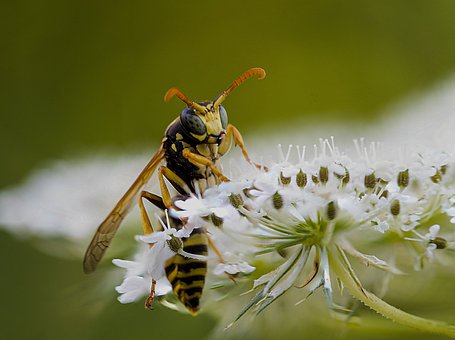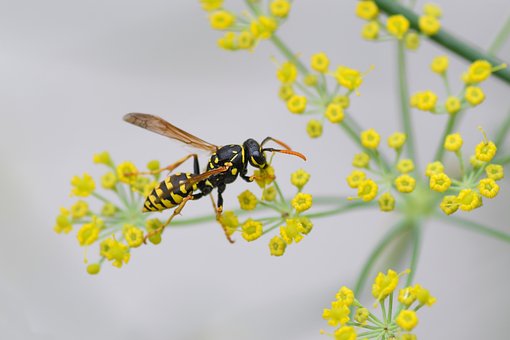Whether you’re dealing with a wasp nest in your chimney or trying to keep bugs from coming down, both can be a daunting and dangerous situation.
Despite being tiny, these insects’ stings may result in severe discomfort and even fatal allergic reactions.
Wasp removal from the fireplace is not a simple process, but with the correct equipment and procedures, it can be done successfully and safely.
Important Note: If you're tired of pests and want a reliable solution, then you should definitely consider seeking help from a professional pest control company. DIY solutions can be effective, but if you're dealing with a significant pest infestation, you don't want to rely solely on DIY methods. Pest control companies typically don't charge huge fees. You can fill out this form to receive free quotes from the top local pest control companies, and compare the quotes and see for yourself. Then, finally, your pest problems will be eliminated for good.
But don’t let the risk and uncertainty of DIY methods compromise your safety. Trust our experts for efficient and hassle-free wasp nest removal from your chimney.
Fill out our form now for professional pest control services and enjoy a wasp-free home environment.
If you still want to try home methods then we will walk you through the processes to get wasps out of chimney.

Common Reasons Why Wasps Build Nests in Chimneys
There are several reasons why wasps reside in chimneys, including:
Shelter
Wasps are drawn to chimneys due to the fact that they provide an area of security that is dry, warm, and shielded from the outdoors.
The brickwork of the chimney additionally offers a safe area for wasps to construct their nests, shielding them from outside attackers and giving a solid basis for their hive.
It can be challenging to remove wasps nests once they are built, making prevention crucial in avoiding infestations.
Food
Chimneys can be a food source for wasps as insects, spiders, and small animals can become trapped inside.
Wasps are attracted to these food sources and will venture into the chimney to retrieve them.
Once inside, they may decide to build their nest in the chimney due to the abundance of food available.
Regular chimney cleanings can help reduce the number of potential food sources and discourage wasps from taking up residence.
Light
Wasps are attracted to light sources and may be drawn to chimneys that have lights nearby.
This can include porch lights or lights from nearby buildings. When wasps see the light, they will fly toward it and may inadvertently end up inside the chimney.
Homeowners can reduce the likelihood of wasps being attracted to their chimneys by using low-light outdoor lighting or by installing motion-activated lights that only turn on when needed.
Scent
Wasps have a keen sense of smell and can be attracted to certain scents. Floral fragrances, soot, and creosote are common scents that can attract wasps to chimneys.
Soot and creosote can accumulate in chimneys over time, and when combined with a floral fragrance or other strong scent, can be very attractive to wasps.
Regular chimney cleanings and inspections can help prevent the buildup of these scents and reduce the likelihood of a wasp infestation.
Access
If a chimney is damaged or has cracks, it can provide an easy access point for wasps to enter a home and build their nests.
Wasps can enter through even the tiniest openings, so it’s essential to regularly inspect and maintain the chimney to prevent infestations.
Sealing any cracks or openings in the chimney can help keep wasps out and reduce the likelihood of them using it as a point of entry to the home.

How to Remove Wasps from Chimneys
Removing wasps from chimneys can be a tricky task, and it’s important to take the necessary precautions to ensure your safety.
Here are some steps you can take to remove wasps from chimneys:
Identify the Wasp Species
The identification of the wasp type is an essential phase in eliminating wasps from a chimney.
Some species, like yellow jackets, can be aggressive and require professional removal.
It’s essential to understand the species you’re dealing with to ensure the proper removal method is used and to avoid any potential risks or dangers associated with handling the wasps.
If you are uncertain regarding the species or have any other worries, you should seek the advice of an expert pest control agency.
Wear Protective Clothing
Protective clothing is necessary when removing wasps from a chimney.
Wear a long-sleeved shirt, long pants, gloves, and a hat or veil to avoid being stung.
Goggles should also be worn to protect the eyes from any flying wasps.
Proper attire can help prevent injuries or allergic reactions and make the wasp removal process safer and more comfortable.
Wait Until Night
Removing wasps from a chimney should be done at night since wasps are less active during this time, making it safer to remove them.
As wasps are attracted to light, it’s best to avoid using any light sources near the chimney.
Removing them at night can help prevent injuries and ensure the process is completed safely and effectively.
Use Insecticide
Using insecticide is an effective way to remove wasps from a chimney.
Apply an insecticide foam or spray into the chimney opening to kill the wasps.
It’s important to use an insecticide specifically designed for wasps to ensure maximum effectiveness.
Be sure to follow the instructions on the label carefully and take proper precautions to ensure your safety while handling the insecticide.
Seal the Chimney
After the wasps are completely eliminated, the chimney must be sealed to avoid another infestation.
Install a chimney cap or mesh screen to block any access points for wasps.
This will help keep additional insects out of the chimney, such as birds and squirrels, and lessen the likelihood of debris buildup.
Clean the Chimney
Cleaning the chimney is a crucial step after removing wasps to ensure the chimney is free of debris or nests.
Use a chimney brush or hire a professional chimney sweep to clean the chimney thoroughly.
This will ensure the chimney is safe to use and reduce the risk of a chimney fire.
Neglecting to clean the chimney can also lead to poor indoor air quality and other potential hazards.

How to Prevent Wasps In the Chimney
Preventing wasps from entering your chimney is important to avoid potential problems in the future.
Here are some steps you can take to prevent wasps from entering your chimney:
- Install a chimney cap or mesh screen to block access points for wasps and other pests.
- Repair any cracks or damage to the chimney to prevent wasps from entering.
- Avoid using bright lights near the chimney to prevent attracting wasps.
- Keep the area around the chimney clean and free of debris to avoid attracting wasps and other pests.
- Use essential oils or scents that are unpleasant to wasps to deter them from entering the chimney.
Frequently Asked Questions
Can You Smoke Wasps Out of a Chimney?
Yes, you can smoke wasps out of a chimney by running your chimney and burning fire.
The smoke from the fire will deter the wasps and keep them from flying back around.
Nevertheless, before utilizing the chimney, be sure that every single wasp has exited; otherwise, they might get into the house via the front door.
Can Wasps Enter the House Through the Chimney?
Yes, wasps can enter the house and come down the chimney if it is not properly sealed.
They’ll be drawn to the heat of your chimney, especially in cooler temperatures, and if it doesn’t have any lingering smoke or fire smells, they’ll deem it a perfect spot to set up camp.
Wasps can fly into the chimney and build their nests near the entrance, which can give them easy access to your living space through cracks or gaps in the chimney and they may fly into your home through the fireplace or other openings.
How Do I Get Rid of a Wasp Nest in My Vent?
- Wear protective clothing (long sleeves, pants, gloves, hat, or bee veil)
- Turn off the power supply to the vent
- Spray or dust the nest with a wasp pesticide according to the label instructions
- Wait 24 hours before removing a nest
- Vacuum the nest and dispose of it in a sealed bag in an outdoor garbage bin.
Do Yellow Jackets Build Nests in Chimneys?
Yes, yellow jackets can build their nests in chimneys.
While yellow jackets typically build their paper nests underground or in hollow trees, they may also build their nests in other covered or protected areas, including chimney flues.
If the chimney is unused and has an open top, it provides an ideal location for yellow jackets to build their nest in a protected and undisturbed area.

Conclusion
Having wasps in your chimney can be a dangerous and unpleasant experience.
Follow the steps mentioned in the article to safely and securely do the task of removing wasp nest.
Remember to always prioritize your safety and consider hiring a professional if you’re unsure about handling the situation on your own.
You may avoid further infestations by always keeping an eye out for wasps infestation in your home while maintaining a safe and pleasant home by cleaning your chimney properly and keeping it neat and tidy.

